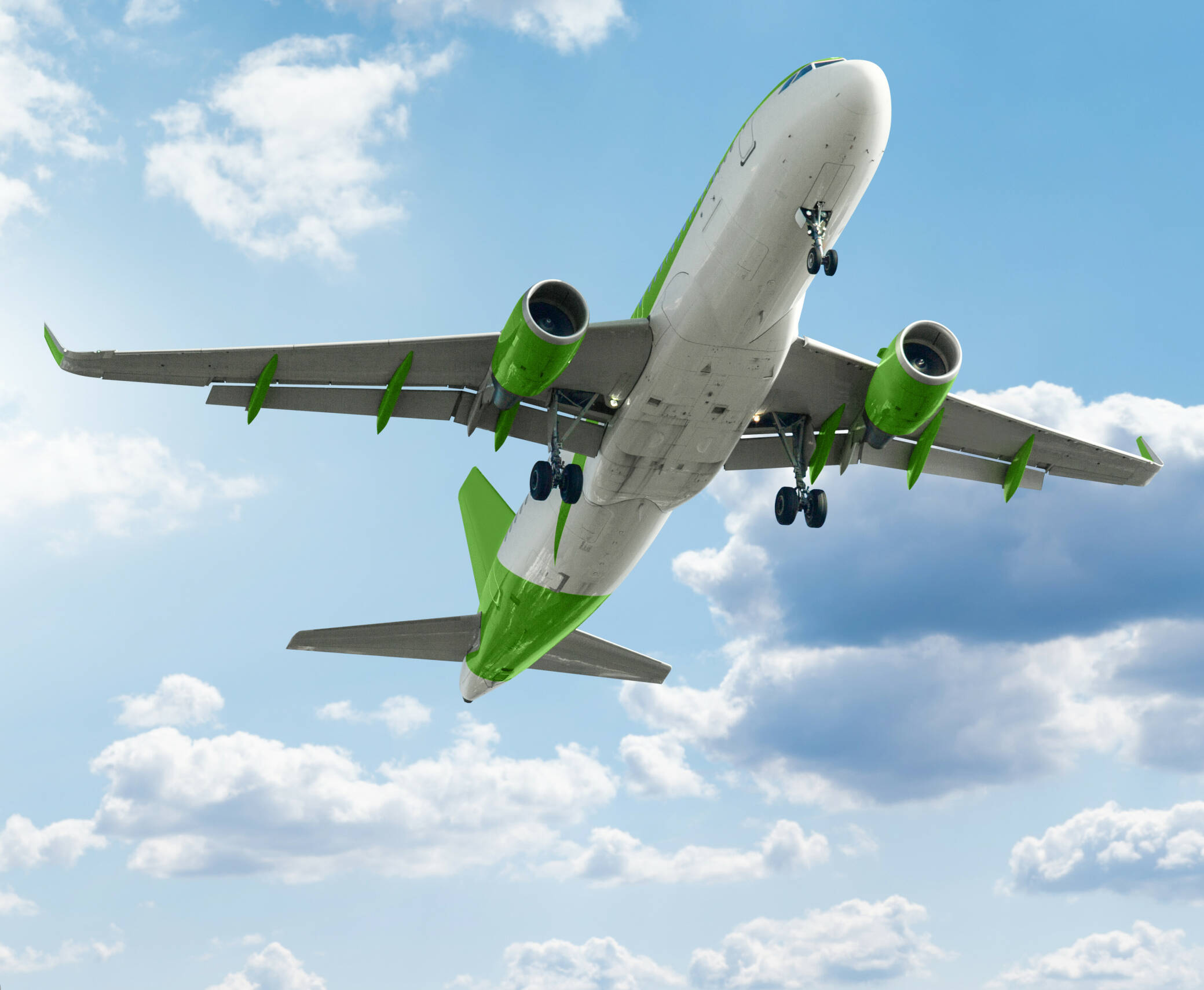An ICAO agreement on the Long-Term Aspirational Goal aligns governments with the industry’s Fly Net Zero by 2050 goal.

Airspace Article



Airspace Article

Regulatory certainty to allow investment and finance to flourish
A level playing field for all stakeholders in a highly competitive industry
Consistent and harmonised policies
The agreement on the Long-Term Aspirational Goal (LTAG) at ICAO is far more than an endorsement of aviation’s stated ambition to reach net zero carbon emissions by 2050.
The decision on the LTAG at ICAO comes after a year of intense negotiations bridging the different levels of development across the world. There was near unanimous support at the ICAO Assembly for the goal, with only a few States opposing the move.
“Reducing the environmental impact of aviation is one of the most pressing issues facing our industry,” says CANSO Director General Simon Hocquard. “We are delighted that governments have backed aviation’s aim to fly net zero. CANSO and the ATM industry stand ready to play our part in meeting this ambitious goal.”
Consistent and harmonised policies will avoid the confusion that has already been seen in carbon offsetting. The industry’s own scheme – the Carbon Offsetting Reduction Scheme for International Aviation (CORSIA) – has also been agreed at ICAO with a baseline set at 85% of 2019 emissions for the medium term. There is, however, a plethora of carbon pricing, taxes and trading schemes worldwide. The European Union has been looking to implement its Emissions Trading Scheme (EU ETS), for example, but it is hoped the recent ICAO agreement on the CORSIA baseline will negate that desire.
Likewise, a level playing field is essential for a global industry to thrive. Individual countries can still pursue initiatives that make sense for them – incentivising a particular feedstock for sustainable aviation fuel (SAF) perhaps – but the overall effect has to be a global reduction in carbon. Many countries are mandating SAF, but production is still quite limited in terms of capacity and location. Those carriers working under a mandate could therefore be subject to higher costs than competitors or may not even be able to access SAF. Incentives to diversify SAF production and methodologies would be bring better benefits.
SAF, carbon capture and – crucially for air navigation service providers – new technologies all require significant investment and returns on that investment are only apparent in the medium term. The LTAG will provide companies with the certainty that policies are not going to change. Net zero will be the goal for the next few decades.
Funding for sustainable initiatives therefore makes financial sense. Anything that adds unnecessary carbon to the atmosphere is likely to be heavily penalised going forward while decarbonisation will be rewarded.
Having countries support the Fly Net Zero target provides an essential framework for progress. It should ensure:
The aim now is transferring the aspirational character of the LTAG into concrete actions that will help aviation realise its goal.
“The spirit of global cooperation has been on show at ICAO over the past year with governments making the most of the benefits of multilateralism,” says Executive Director of the Air Transport Action Group, Haldane Dodd. “But setting a goal is one thing. Making it a reality is where the hard work really begins and we need to continue – and accelerate – the efficiency improvements and energy transition that is already underway across the industry.”
Dodd believes financing the transition will be a priority for governments, industry and the investment sector. He also calls on the energy industry to get serious about the build-up of SAF.
“Importantly, the net-zero goal is shaped in a way that allows for different speeds of decarbonisation by countries around the world, ensuring that each government can respond to its own national circumstances but within a common global framework of action, he says. “Everyone is flying in the same direction towards net-zero aviation by the middle of this century.”
Time for action

An ICAO agreement on the Long-Term Aspirational Goal aligns governments with the industry’s Fly Net Zero by 2050 goal.
Read full article

Airspace Article


The decision on the LTAG at ICAO comes after a year of intense negotiations bridging the different levels of development across the world. There was near unanimous support at the ICAO Assembly for the goal, with only a few States opposing the move.
“Reducing the environmental impact of aviation is one of the most pressing issues facing our industry,” says CANSO Director General Simon Hocquard. “We are delighted that governments have backed aviation’s aim to fly net zero. CANSO and the ATM industry stand ready to play our part in meeting this ambitious goal.”
Consistent and harmonised policies will avoid the confusion that has already been seen in carbon offsetting. The industry’s own scheme – the Carbon Offsetting Reduction Scheme for International Aviation (CORSIA) – has also been agreed at ICAO with a baseline set at 85% of 2019 emissions for the medium term. There is, however, a plethora of carbon pricing, taxes and trading schemes worldwide. The European Union has been looking to implement its Emissions Trading Scheme (EU ETS), for example, but it is hoped the recent ICAO agreement on the CORSIA baseline will negate that desire.
Likewise, a level playing field is essential for a global industry to thrive. Individual countries can still pursue initiatives that make sense for them – incentivising a particular feedstock for sustainable aviation fuel (SAF) perhaps – but the overall effect has to be a global reduction in carbon. Many countries are mandating SAF, but production is still quite limited in terms of capacity and location. Those carriers working under a mandate could therefore be subject to higher costs than competitors or may not even be able to access SAF. Incentives to diversify SAF production and methodologies would be bring better benefits.
SAF, carbon capture and – crucially for air navigation service providers – new technologies all require significant investment and returns on that investment are only apparent in the medium term. The LTAG will provide companies with the certainty that policies are not going to change. Net zero will be the goal for the next few decades.
Funding for sustainable initiatives therefore makes financial sense. Anything that adds unnecessary carbon to the atmosphere is likely to be heavily penalised going forward while decarbonisation will be rewarded.
Consistent and harmonised policies
A level playing field for all stakeholders in a highly competitive industry
Regulatory certainty to allow investment and finance to flourish
The agreement on the Long-Term Aspirational Goal (LTAG) at ICAO is far more than an endorsement of aviation’s stated ambition to reach net zero carbon emissions by 2050.
Having countries support the Fly Net Zero target provides an essential framework for progress. It should ensure:
The aim now is transferring the aspirational character of the LTAG into concrete actions that will help aviation realise its goal.
“The spirit of global cooperation has been on show at ICAO over the past year with governments making the most of the benefits of multilateralism,” says Executive Director of the Air Transport Action Group, Haldane Dodd. “But setting a goal is one thing. Making it a reality is where the hard work really begins and we need to continue – and accelerate – the efficiency improvements and energy transition that is already underway across the industry.”
Dodd believes financing the transition will be a priority for governments, industry and the investment sector. He also calls on the energy industry to get serious about the build-up of SAF.
“Importantly, the net-zero goal is shaped in a way that allows for different speeds of decarbonisation by countries around the world, ensuring that each government can respond to its own national circumstances but within a common global framework of action, he says. “Everyone is flying in the same direction towards net-zero aviation by the middle of this century.”
Time for action

Airspace Article
